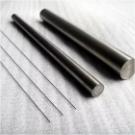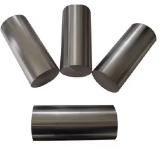**Rhodium Plating: The Secret to Making Metals Shine (and Stay That Way)**
(How Well Does Rhodium Plating Stick To Certain Metals)
Rhodium plating is like the superhero of jewelry finishes. It’s shiny, tough, and gives that mirror-like glow everyone loves. But here’s the big question: does it actually stick to metals for the long haul, or does it peel off like a cheap sticker? Let’s break it down.
First, rhodium plays nice with some metals better than others. Take silver, for example. Pure silver is soft and tarnishes fast. Rhodium plating steps in like a bodyguard. It bonds well with silver, adding a hard, scratch-resistant layer that keeps it looking new. Same goes for white gold. White gold isn’t actually white—it’s mixed with alloys like nickel or palladium and coated with rhodium to get that icy look. The rhodium clings tight, making the jewelry durable and bright.
Now, not every metal is a match made in heaven. Copper and brass are tricky. These metals react with air and skin oils, forming a layer of gunk called oxidation. Rhodium hates that. If you plate rhodium directly onto copper or brass without a middleman—like a layer of nickel—it’ll flake off fast. The secret? Prep work. Clean the metal thoroughly, add a base layer, and rhodium will stick better.
What about stainless steel? It’s already tough, so why plate it? Some people want that extra bling. Rhodium can bond to stainless steel, but it’s overkill. Steel doesn’t tarnish, and rhodium’s main job—blocking corrosion—isn’t needed here. Still, if you want a fancy finish on a steel watch or ring, rhodium delivers. Just know it’s more for looks than function.
Plating quality matters too. Ever seen rhodium wear off a ring in months? Blame poor technique. Good rhodium plating needs two things: a super-clean surface and the right electrical current during plating. Even tiny dirt or oil residues mess up the bond. Professionals use ultrasonic cleaners and acid baths to scrub metals spotless. Skip these steps, and the rhodium might as well be glued on with spit.
Thickness plays a role. Rhodium plating is measured in microns—thinner than a human hair. Jewelry plating is usually 0.1 to 0.3 microns. Too thin, and it wears off fast. Too thick, and it gets brittle and cracks. For items like rings that get bumped daily, a thicker coat lasts longer. Earrings or pendants? A thin layer works fine.
Cost is another factor. Rhodium is pricier than gold. Plating a whole piece costs a lot, so most jewelers use it as a topcoat. If you’re re-plating a ring, expect to do it every few years. The good news? Re-plating is cheaper than buying new jewelry.
Ever wonder why rhodium-plated jewelry feels cooler to the touch? Rhodium conducts heat fast, so it pulls warmth from your skin quicker than other metals. It’s also hypoallergenic. If nickel makes you itch, rhodium’s your friend—it seals the nickel underneath, stopping skin reactions.
Care tips are simple. Keep rhodium-plated items away from harsh chemicals. Chlorine in pools? Bad news. Soap and water work for cleaning. Don’t scrub too hard—gentle wipes keep the shine intact. Store pieces separately to avoid scratches.
(How Well Does Rhodium Plating Stick To Certain Metals)
Rhodium’s magic isn’t just in the sparkle. It’s in the science of sticking. Pair it with the right metal, prep it well, and that glow won’t quit. Pick the wrong base or cut corners, and you’ll watch your investment fade. Next time you see a rhodium-plated piece, you’ll know exactly what’s holding that shine together—and how to make it last.
Inquiry us
if you want to want to know more, please feel free to contact us. (nanotrun@yahoo.com)


